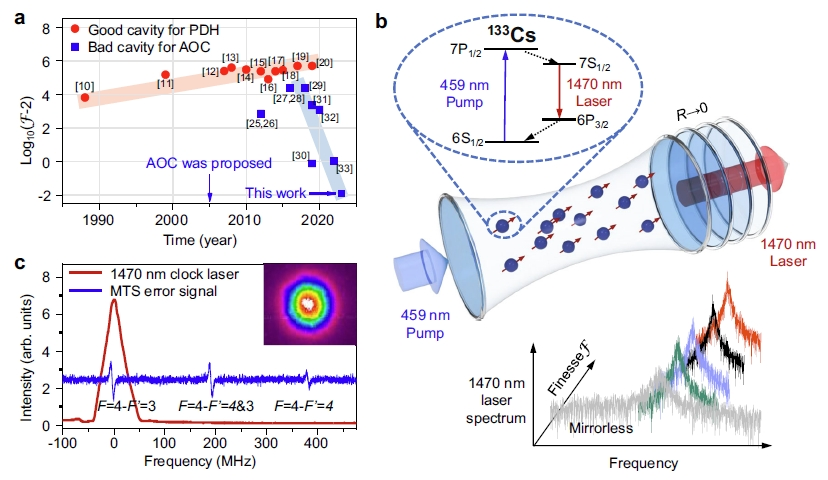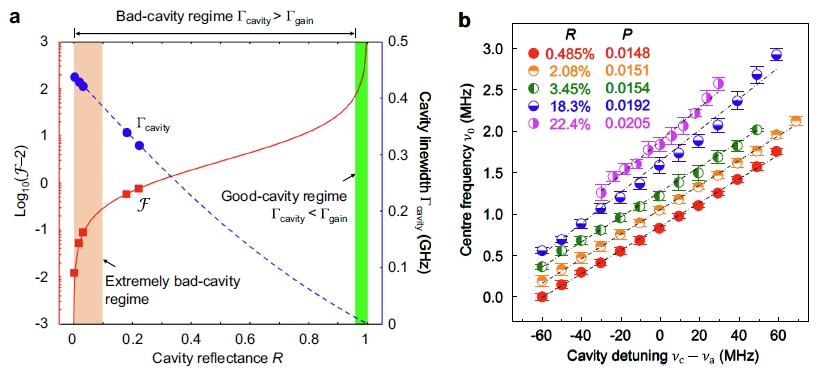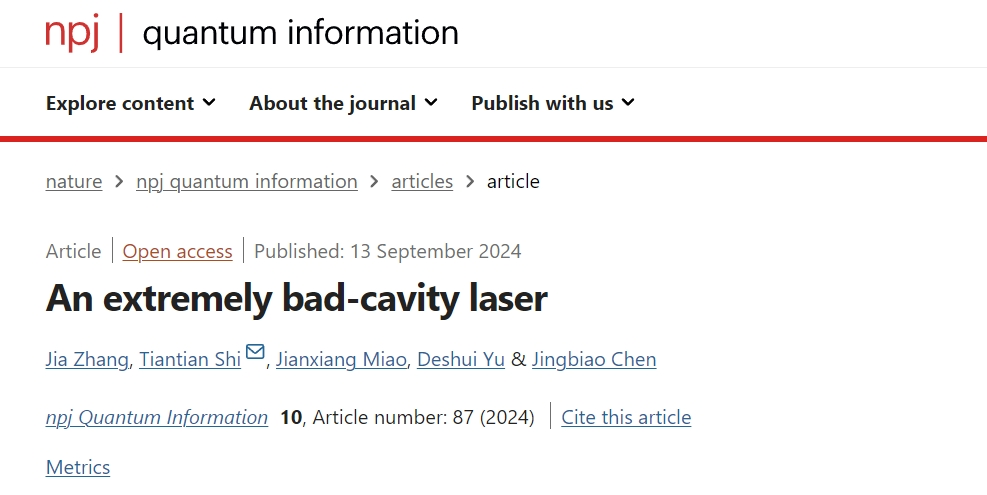
The study aimed to advance the development of ultra-narrow linewidth lasers, addressing technical limitations and expanding their potential applications in cutting-edge fields. The team successfully utilized an optical resonator with ultra-low finesse (~2.01, approaching the theoretical minimum) to achieve an extremely bad-cavity active optical clock laser. This breakthrough significantly compressed the laser's linewidth, moving beyond the reliance on high-finesse resonators in traditional laser designs and opening new pathways for achieving narrow linewidth lasers.

Effect of cavity pulling suppression in the extremely bad-cavity laser
The research, based on the extremely bad-cavity active optical clock principle first proposed by Professor Chen in 2005, overcame performance bottlenecks in traditional passive optical clocks caused by thermal noise. Nonethless, experimental results showed a record-low cavity pulling coefficient of 0.0148 for active optical clock lasers. These findings, titled "An extremely bad-cavity laser," were published in NPJ Quantum Information.The study was led by Jia Zhang (doctoral student, class of 2021) and Miao Jianxiang (doctoral student, class of 2019), Assistant Researcher Shi Tiantian from the School of Integrated Circuits, and Yu Deshui from the National Time Service Center.

Lasers, one of the greatest inventions of the 20th century, have become indispensable tools in science, industry, and medicine due to their high directionality, brightness, monochromaticity, and coherence. Among them, ultra-stable lasers with extremely narrow linewidths hold vast potential for applications in quantum optics, precision spectroscopy, and fundamental physical measurements.
Since its introduction in 1983, the Pound-Drever-Hall (PDH) stabilization technique, which uses ultra-high finesse optical resonators (now reaching values in the hundreds of thousands), has been the dominant method for narrowing laser linewidths. However, further improvements in performance have been limited by thermal noise in the cavity length.